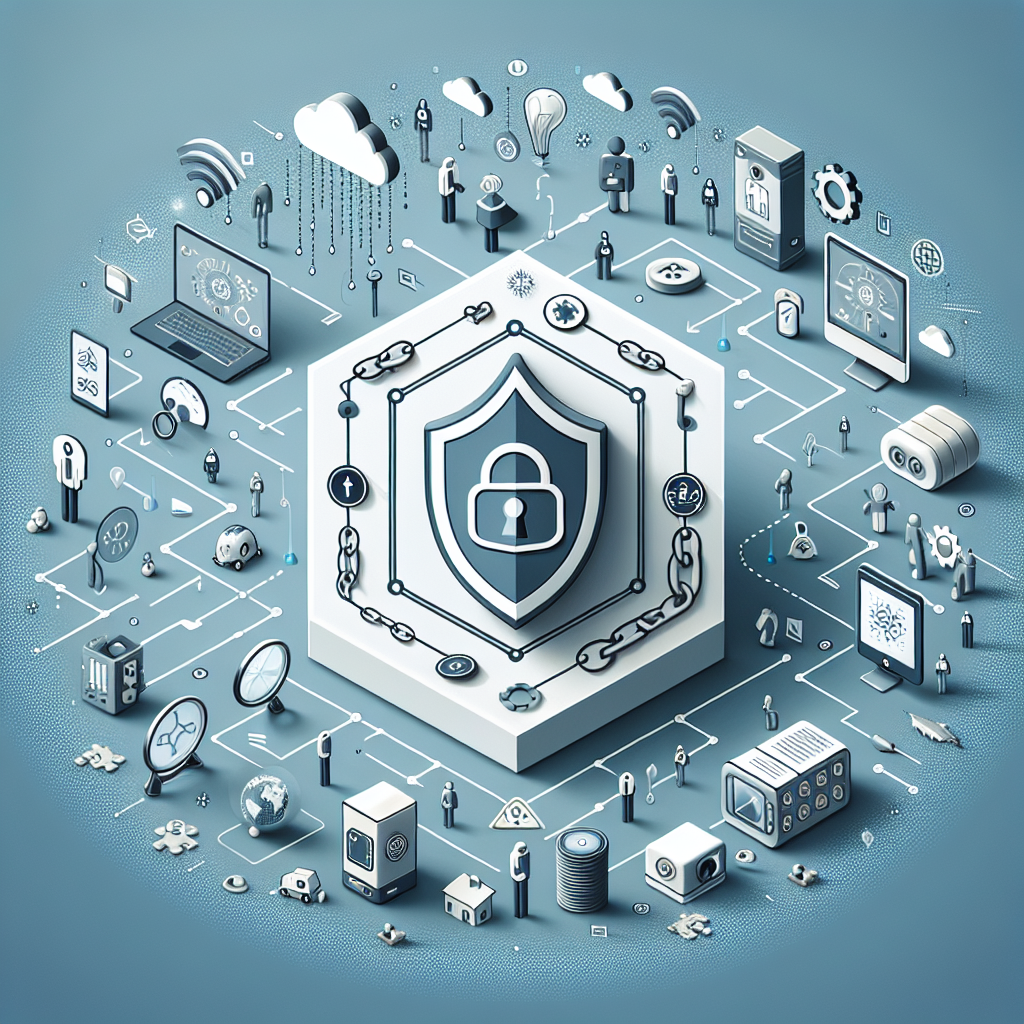The rapid proliferation of the Internet of Things (IoT) has transformed the way we live and work, creating an interconnected network of devices that communicate and share data. From smart home gadgets to industrial sensors, IoT is enriching our lives but also introduces significant cybersecurity risks that must not be ignored. As devices become more ubiquitous, understanding their impact on cybersecurity becomes crucial for individuals and organizations alike. This article explores the inherent risks associated with IoT, offers actionable recommendations, and addresses frequently asked questions.
The Landscape of IoT Cybersecurity Risks
1. Insecure Devices
Many IoT devices were not designed with security as a primary focus. Insecure configurations, weak default passwords, and the absence of regular security updates make them prime targets for attackers. For example, in 2016, the Mirai botnet compromised hundreds of thousands of poorly secured IoT devices, which were used to launch a massive DDoS (Distributed Denial of Service) attack on a DNS provider, affecting many high-profile websites.
2. Data Breaches
IoT devices collect vast amounts of sensitive data. Whether it’s a fitness tracker monitoring your health metrics or a smart home camera recording video footage, this information is valuable to cybercriminals. A breach can lead to identity theft, invasion of privacy, and unauthorized access to personal or corporate networks.
3. Increased Attack Vectors
Each IoT device connected to a network is another potential entry point for cyber threats. A compromised device can serve as a gateway to attack other devices and systems, thus amplifying the risk of a breach. The interconnected nature of IoT environments means that securing one device can be insufficient if others are left vulnerable.
4. Lack of Standards and Regulation
The IoT landscape is fragmented, with various manufacturers implementing different security protocols (or none at all). The absence of universal standards complicates the landscape, making it harder to assess the security of devices. Regulatory efforts are still catching up, leaving many users without legal recourse in case of cyber incidents.
5. Privacy Issues
As IoT devices collect data, issues of privacy arise. Users often are unaware of what data is being collected and how it is being used by third parties. Moreover, companies may sell anonymized data, raising ethical questions about consent and ownership.
Recommendations for Enhancing IoT Cybersecurity
To mitigate the risks associated with IoT devices, both individuals and businesses must adopt proactive measures. Here are several recommendations to enhance security:
1. Change Default Credentials
Always change default usernames and passwords for IoT devices. Create strong, unique passwords that include a mix of letters, numbers, and special characters. Regularly update these passwords, especially for devices that store sensitive data.
2. Secure Your Network
Utilize a robust firewall and consider setting up a separate network for your IoT devices. Many routers offer a guest network feature that can isolate IoT devices from your main home or business network. This can help in minimizing the risk should a device be compromised.
3. Update Firmware Regularly
Regularly check for firmware updates provided by manufacturers. These updates often contain security patches that address known vulnerabilities. Set devices to automatically update when possible to ensure that you are always running the most secure version.
4. Implement Strong Encryption
Ensure that data transmitted between IoT devices and the internet is encrypted. Look for devices that use robust encryption protocols such as WPA3 for Wi-Fi connections or TLS (Transport Layer Security) for data transmission.
5. Limit Data Sharing
Track what data IoT devices are collecting and assess its necessity. Opt for devices that allow you to manage your privacy settings and minimize data sharing. Be wary of applications that require excessive permissions that are not relevant to the device’s primary functionalities.
6. Conduct Security Audits
Regularly assess the security of your IoT ecosystem. This may involve penetration testing to identify vulnerabilities or a complete audit of device configurations and network security. Both individuals and organizations should consider investing in security assessment services.
7. Educate Users
Awareness is key to improving IoT security. Educate employees and family members about the potential risks associated with IoT and best practices for safe usage. Regular training can help in identifying phishing attempts and other social engineering attacks aimed at exploiting IoT devices.
FAQs
1. What is IoT, and how does it relate to cybersecurity?
The Internet of Things (IoT) refers to the network of physical devices embedded with sensors, software, and other technologies that connect and exchange data with other devices over the internet. These devices can pose cybersecurity threats when they have weak security protocols or are compromised, enabling cybercriminals to gain unauthorized access to networks.
2. What are common types of IoT devices?
Common types of IoT devices include smart home appliances (e.g., thermostats, locks, cameras), wearable fitness trackers, industrial sensors, and connected vehicles. Each of these devices can introduce distinct cybersecurity concerns.
3. How can individuals secure their IoT devices at home?
Individuals can secure their IoT devices by changing default credentials, ensuring strong network security, regularly updating devices, utilizing strong encryption, and being vigilant about data sharing and permissions.
4. Are companies responsible for IoT device security?
Yes, companies that manufacture and sell IoT devices have a responsibility to implement security measures. However, end-users must also take steps to protect themselves and their networks.
5. What role do regulations play in IoT cybersecurity?
Regulations are crucial for establishing minimum standards in IoT security. They can enforce requirements for manufacturers to implement secure practices during the design and development of IoT products.
6. How serious is the risk of IoT attacks?
The risk of IoT attacks is significant and growing. As more devices become connected, the potential for exploitation increases. Cybercriminals are constantly evolving their tactics, making it essential for users and organizations to remain vigilant.
Conclusion
Incorporating IoT into our daily lives offers immense benefits, but it comes with a set of cybersecurity challenges that cannot be overlooked. By understanding the risks associated with IoT devices and adopting proactive security measures, individuals and organizations can better protect themselves in this increasingly connected world. As the IoT landscape continues to evolve, ongoing assessment and adaptation will be crucial for maintaining cybersecurity resilience.


